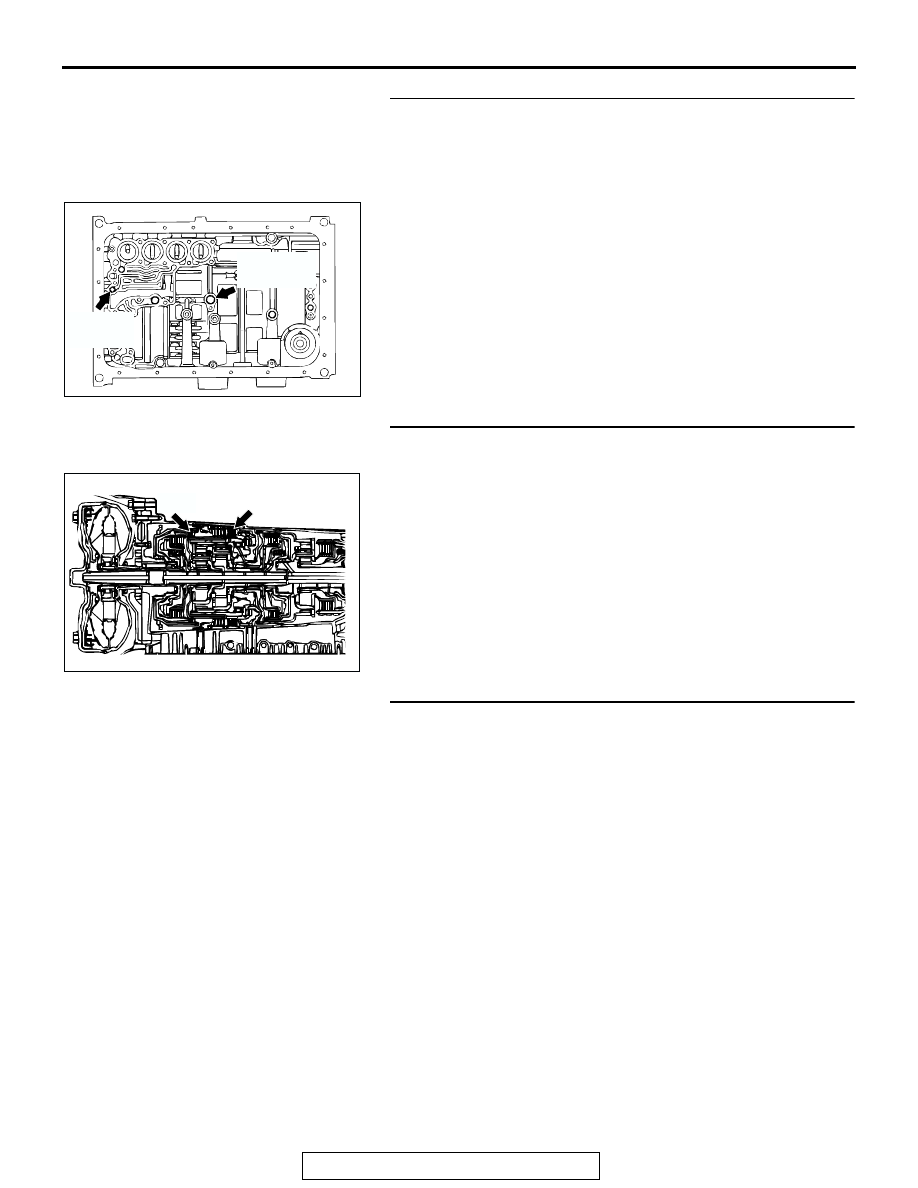Mitsubishi Montero (2004+). Manual - part 936

AUTOMATIC TRANSMISSION DIAGNOSIS
TSB Revision
AUTOMATIC TRANSMISSION
23A-319
STEP 5. Check the reverse clutch system and low-reverse
brake system.
(1) Remove the valve body cover and valve body. Refer to
, Transmission and Transfer Assembly and refer
to GROUP 23B, Transmission
(2) Blow 108 kPa (15 psi) compressed air into the reverse
clutch oil orifice of the transmission case, and check if the
reverse clutch piston moves and air pressures are
maintained in that condition. Repeat for the low-reverse
brake.
Q: Are both air pressures maintained?
YES : Go to Step 6.
NO : Go to Step 9.
STEP 6. Check the reverse clutch and low-reverse brake.
(1) Remove the transmission assembly.
(2) Check the facing for seizure and the piston seal ring for
damage and interference with the retainer. Repair or
replace the faulty parts. Refer to GROUP 23B,
Transmission
, Reverse and Overdrive Clutch
. Then retest the system.
Q: Is the symptom eliminated?
YES : The procedure is complete.
NO : Go to Step 11.
STEP 7. Check shift shock.
Q: Does shift shock occur sometimes?
YES : Go to Step 8.
NO : Go to Step 9.
ACX02249AC
REVERSE
CLUTCH OIL
ORIFICE
LOW-REVERSE
BRAKE OIL
ORIFICE
AC204883
REVERSE
CLUTCH
LOW-REVERSE
BRAKE
AC